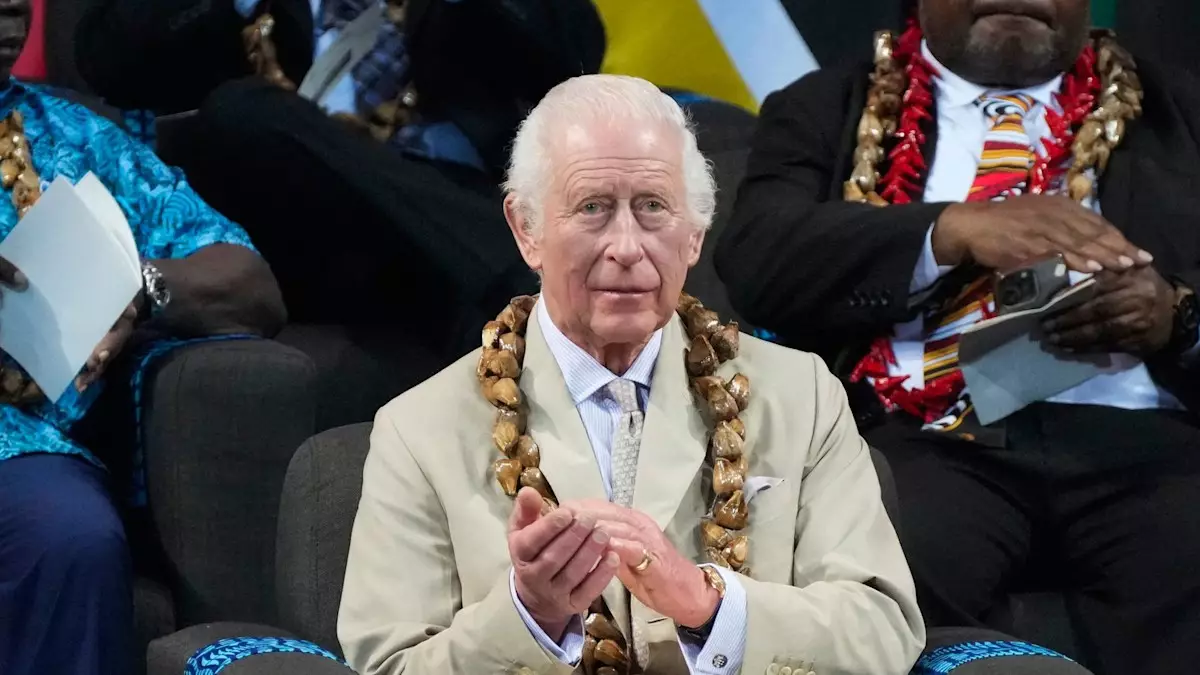In a surprising turn of events last month, King Charles III captured the attention of royal enthusiasts and medical communities alike by announcing a temporary halt to his cancer treatment, primarily to fulfill his scheduled tours in Australia and Somalia. This decision, though supported by his healthcare providers, came with stringent guidelines regarding the duration of this reprieve. At an international sustainability conference held at Buckingham Palace, the King eloquently shared his sentiments about the circumstances, particularly expressing disappointment for missing out on a visit to Fiji. This revelation highlighted not only his commitment to duty but also the reality of balancing royal obligations with health concerns.
The King’s aggressive pursuit of activity and a positive outlook, despite his ongoing health struggles, has drawn attention from various biographers, including Robert Hardman, who released a recent book detailing the inner workings of the monarchy. Hardman’s book, titled *Charles III: New King. New Court. The Inside Story*, uncovers how the King’s illness has necessitated adjustments to his traditional lifestyle. Notably, the once ritualistic avoidance of lunch has undergone reconsideration. This change is largely influenced by Queen Camilla’s insistence on healthier eating habits. The significance of lunchtime in the King’s daily routine underscores an essential dimension of his health strategy, as his previous tendencies were dictated by the whims of royal protocol and perhaps a fear of public scrutiny.
Queen Camilla’s role in advocating for her husband’s well-being is a pivotal aspect of this narrative. According to Hardman, she has encouraged King Charles to embrace food during the day, a stark contrast to his earlier aversion. This shift reveals not only a personal transformation but also sheds light on the deeply personal dynamics within the royal couple’s relationship. While the King has started partaking in lunches, the meal itself is described as a modest affair, illustrating both compliance with health recommendations and a desire to maintain discretion. The anecdote regarding the King’s preference for a “silver service” style of dining further emphasizes the blend of tradition and personal health considerations within royal life.
The King’s journey serves as an intriguing case study of how an individual in a prominent position navigates health issues while facing public expectations. While his reluctance to captivate the spotlight during meals underscores a deep-seated cultural norm of royal behavior, the adaptations he has made suggest a willingness to prioritize health over traditional royal decorum. This evolution in King Charles’ lifestyle exemplifies the significant challenge of remaining a dedicated monarch while addressing personal vulnerabilities.
Ultimately, King Charles’ health decisions reflect a broader shift within the monarchy toward transparency and authenticity. As he adapts to new routines and embraces necessary lifestyle changes, he sets a precedent for future royals. King Charles serves as a reminder that even amidst the glittering façade of royal life lies the reality of human vulnerabilities, and that prioritizing one’s health can coexist with dutiful service to the crown.

